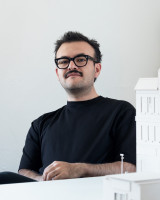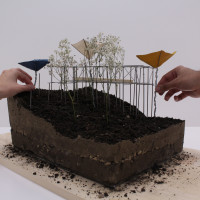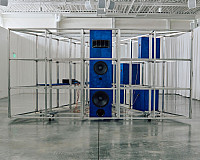Onkar Joshi
Analyzing Cognitive Load: Spatial Design for Product Communication in a Virtual Space
My graduate architecture education at SU has inspired my interest in Extended Reality (XR) as a medium for constructing immersive and interactive spatial constructs which link the physical, digital, and virtual. The recognition of XR, the Metaverse, and its potential impact on our daily lives is demonstrated in the research being done by Facebook, Google, HP, et al. Product manufacturers see XR as opening up a new medium for advertisement. A lot of the content we consume is molded with product placement and monetizing elements. Similar to E-commerce, advertisements are going to become an integral part of the immersive experience.
This project will explore possible combinations of immersive experience with non-intrusive advertising and marketing. This project will create a prototype user centric immersive spatial advertisement. It aims to: include brand or product communication in an immersive environment; investigate scenarios and methods to make the ad experience more cohesive and comfortable; and cater to design, socialization, entertainment, education, and collaboration.
Morgan Noone
round-Up Built Ecologies: Investigating Living Material
It is estimated that approximately 50% of landfill waste derives from building construction and demolition, and that buildings generate 40% of annual CO2 emissions worldwide. While understanding of ecological and health impacts of conventional construction techniques improves and net-zero energy initiatives are growing, fossil fuel-derived and cradle-to-grave life cycle materials continue to predominate throughout much of the globally industrialized building ecosystem. Though sustainable design and development has become a global priority, non-industrialized communities that are seeking urban development have few options regarding sustainable materials or processes, and are often inundated with emissions intensive material construction that relies on imported materials whose extraction and use have been implicated in extensive ecological destruction.
This research is part of a larger project led by Nina Sharifi and Yutaka Sho based in a community outside of Kigali, Rwanda, characterized by the absence of formal transportation infrastructure, shipping systems, or access the global supply chains upon which conventional architectures of industrialized regions typically rely; therefore, sustainable design and construction methodologies must be fundamentally reconceived in regard to supply chain and the subversion of conventional processes of exporting culture via technology and design artifacts. The research proposes an alternative to extractive and exploitative resource ecologies with a ground-up design and construction ecosystem using mycelium-based hybrid modular building systems.
Jake Paige
An Architectural Instrument – Hospice
This research will examine the architecture of Hospices in the US and Japan. These countries have very different mainstream notions of permanence which impacts the design of these spaces. In Japan, impermanence is celebrated to ground us in the moments we live. In the US, permanence implies a certainty and sense of control which is often favored. This Western thought has carried into palliative care, and there is an underlying fear of dying in a “cold” institutional setting amongst the US population.
As the COVID-19 pandemic continues to strain this discomfort, design options to reframe the Hospice building typology are even more relevant than before. Ultimately, there is a stigma associated with talking about death and palliative care options in the US. This research will present design options and encourage discussion about a more accommodating architecture in this sensitive human-centered context.











